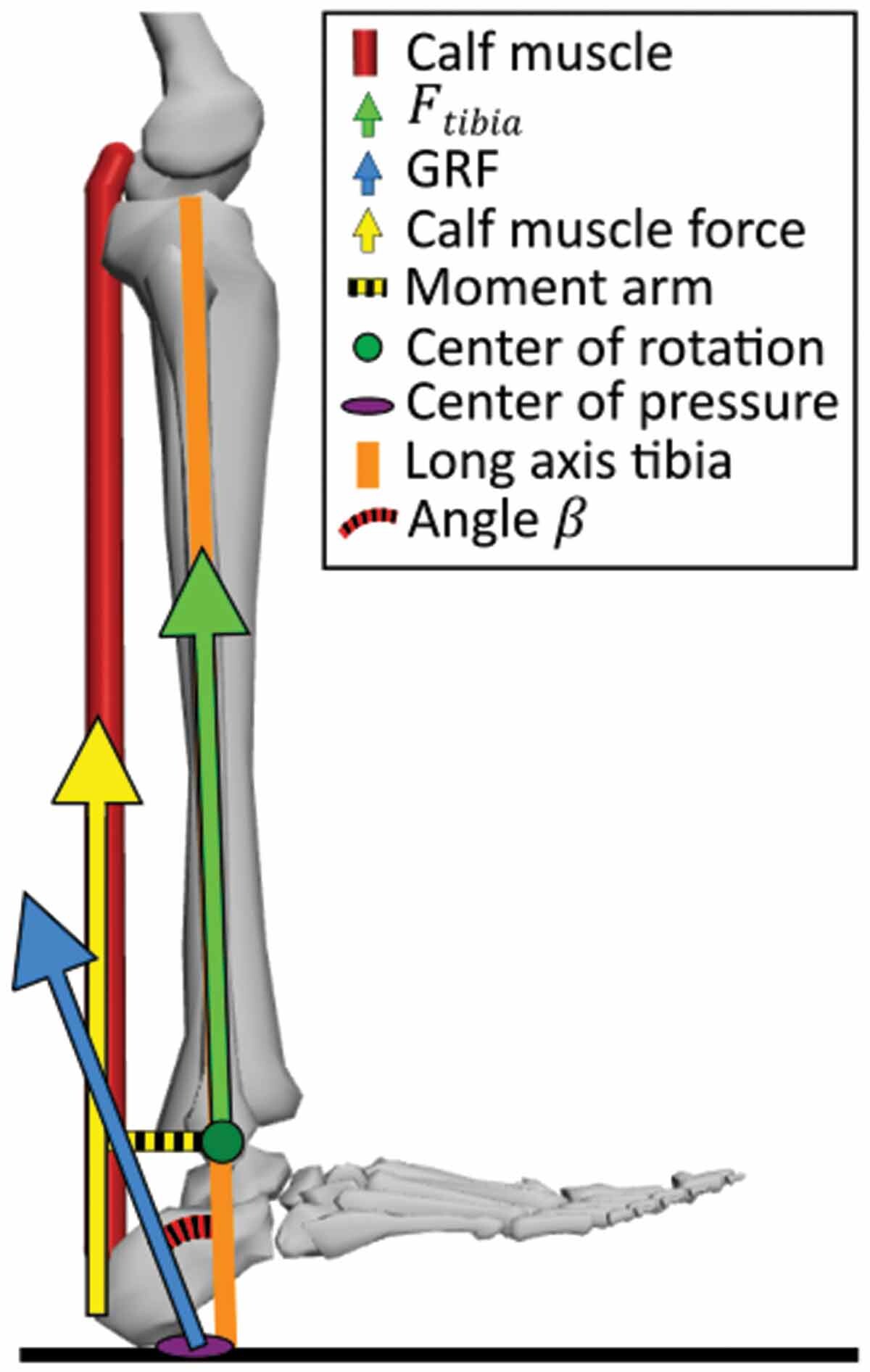The Truth About Running Forces
Discover how compressive forces impact your body in running—and learn smart ways to manage them so injuries don’t steal training time.
Running is a game of forces.
Internal muscle forces plus external ground reaction force (GRF) compress bones and joint surfaces. With every compressive force we also get a tensioning force.
Remarkably, there have been studies showing as much as 9X your body weight in compressive loads once hitting the ground.1
A good example of this is when your foot first hits the ground.
- The tibia (shin bone) experiences a compressive force as your body weight pushes downward and the force of the ground pushes upwards.
- At the same time your anterior tibialis (muscle on the front part of your shin) experiences a tensile force as it works to control the foot from slapping down.
Simply put: When your foot strikes, your shin bone is squeezed from body weight and ground force, while muscles pull on it to control the landing. That mix of squeezing and pulling is how stress builds in all of our tissues from the muscles, tendons, and bones.

So what does this mean if you're running with an injury?
First we have to understand how we can alter or change these loads to get out of pain.
In order of easiest to hardest these are the changes we can ALWAYS make. Mind you easiest does not imply the best outcome and hardest does not mean the most physically taxing:
- Rest - Stop running - Walk or do cross training
- Change shoe wear with more or less drop to offload the problematic area
- Change terrain & speed of running
- Gait Retraining - Modify cadence, foot strike, or other mechanics of your running form
- Alter capacity of tissues by adapting movement patterns and targeted strength training
As you may notice changes 4 & 5 require due diligence, feedback, some form of measuring and likely a good deal of time. Which, if you have the time I would recommend starting there as this will create better long-term solutions to your injury.
Option 1 is always on the table and should be a high priority if dealing with a bone stress injury. Rest is crucial for all training and is often not specifically programmed or structured. However certain injuries will not resolve with rest alone (i.e. muscle & tendon issues). It may ease your pain in the short term but it could also waste valuable training time.
Option 2 which most runners are familiar with is to head to the store in hopes of finding something more comfortable, and within the “quick-fix” solution. There are certain injuries like Achilles Tendinopathy and Runner’s Knee that have shown improvements with a change in offset or “drop” from forefoot to rearfoot.

Decreasing your shoes’ offset from high to low can be beneficial for things like anterior knee pain.2 While increasing your shoes’ offset from low to high can be beneficial for offloading the painful Achilles tendon.
These options can buy you some time but if you have unacknowledged compensations in how you move you could still miss the forest among the trees.
Option 3 is a very important adjustment that all runners should be willing to make in the face of injury and pain. Terrain and speed play critical roles in the relationship of compressive forces.
For example, uphill running can minimize vertical impact force peaks compared to flat or downhill running.3
However, despite studies showing the high impact of running and the compression it places on your body’s tissues you should have no fear that your body cannot handle these forces.
Most runners respond to a balanced mix of options I mentioned above so it is important to remember that your running form, training, and tissue capacity can all be dynamic. You may not notice how much your form changes day to day, but your body is already making micro adjustments to control, displace, and alter loads to reduce the amount of compression on your body.
If you’re confused about how to reduce these forces because you think your body is out of alignment or has some structural concerns then click here to schedule your Running Evaluation.
No matter your injury history or your running experience we can make sure that your body works cohesively to manage all forces. That way you can keep running!
REFERENCES
- Bone contact forces on the distal tibia during the stance phase of running. https://pubmed.ncbi.nlm.nih.gov/17662295/
- Do biomechanical foot-based interventions reduce patellofemoral joint loads in adults with and without patellofemoral pain or osteoarthritis? A systematic review and meta-analysis. https://pubmed.ncbi.nlm.nih.gov/36898768/
- Ground reaction forces during downhill and uphill running. https://pubmed.ncbi.nlm.nih.gov/15652542/
...
